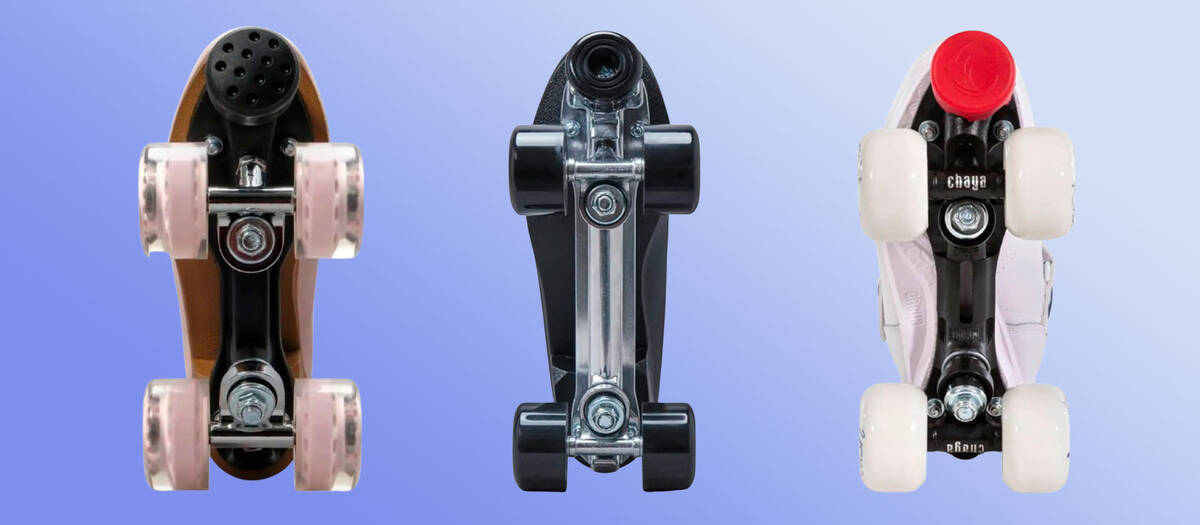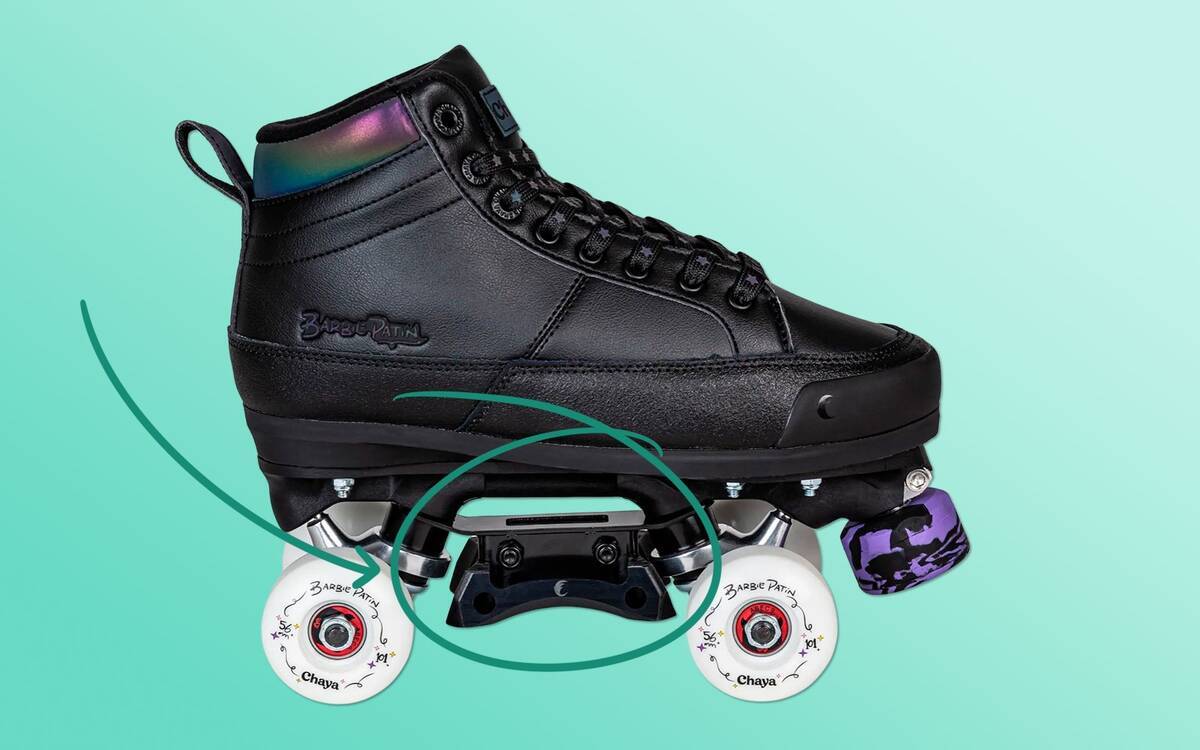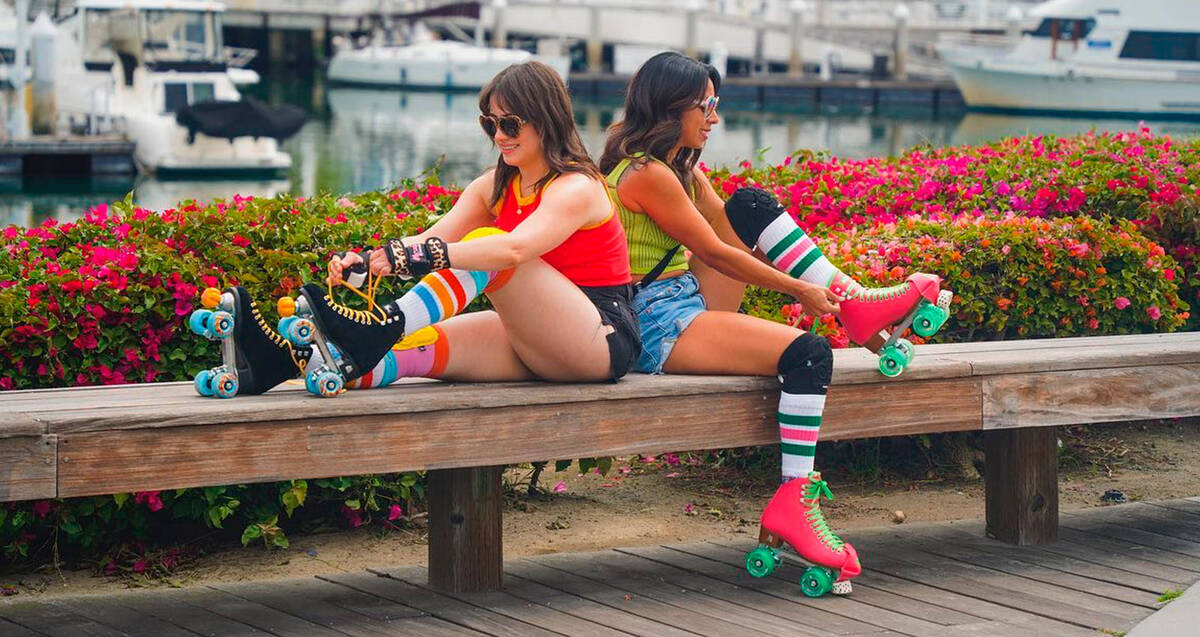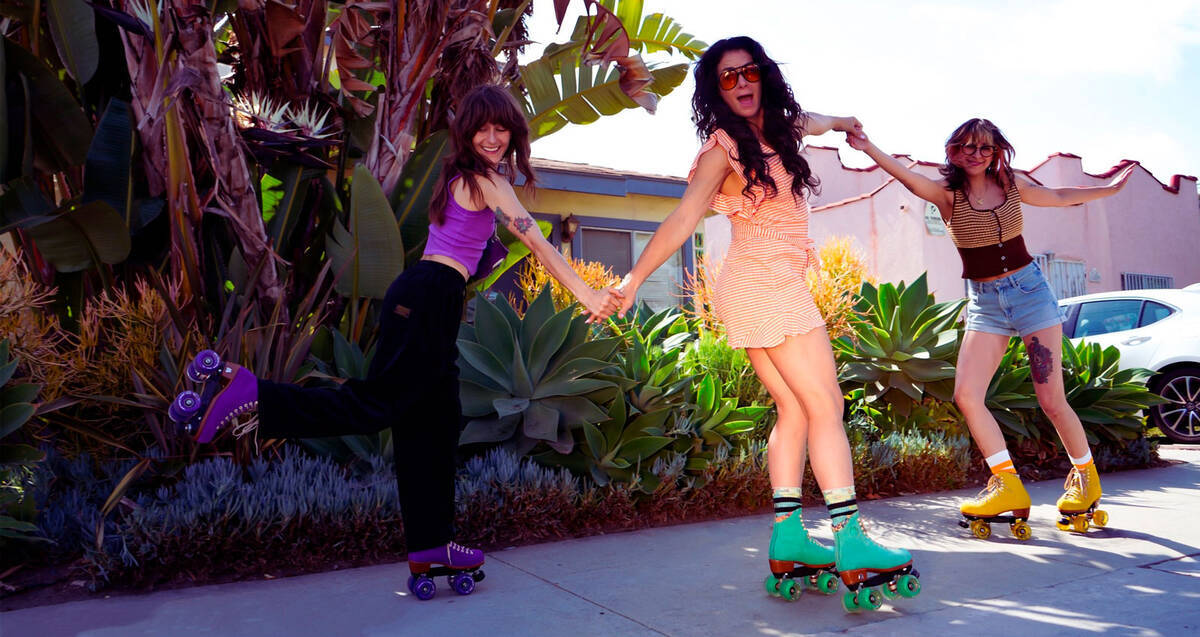Guide to Buying Roller Skates
This guide is designed to assist you in selecting the ideal roller skates for your requirements. Whether you're interested in skates for the skatepark, roller dancing, rhythm skating, or cruising as exercise, we will guide you through all the critical considerations before you purchase.
Overview
Overview
What Size Should My Roller Skates Be?
To determine the correct size for your skates, begin by measuring your foot length. Check the size guide available on the product page for the skates you wish to purchase. Generally, it is suggested to choose a size larger than your normal shoe size. However, sizing may differ between brands and models, so ensure you verify with the specific size chart.
For optimum fit, your skates should be comfortable—not too tight or too loose. A snug fit is crucial for maintaining proper control while skating. You can slightly modify the fit using the laces: for wider feet, loosening the laces can help accommodate your foot's shape. On the other hand, tighten them for a narrower fit or consider adding an insole or thicker socks to support your feet within the roller skate boots.
Selecting the Right Type of Roller Skate Boot

Choosing the appropriate roller skate boots is vital for both comfort and performance. The most suitable skates will feel comfortable, and the boot type you choose significantly impacts this feeling. If you're purchasing skates online and cannot try them on in advance, consider these features to make the best selection:
- Padding: Seek skates with ample padding around the ankle. A well-cushioned boot paired with a firm tongue beneath the laces enables more comfortable and longer skating sessions.
- Stiffness: The boot's stiffness can affect your skating style. Harder boots are ideal for skatepark activities or long-distance skating, providing better ankle protection, enhanced power transfer, and reducing fatigue. For dancing or slalom skating, a softer boot offers more flexibility. On SkatePro, you can find the stiffness specifications within the product details.
- Cut: The boot's cut also matters. High- or mid-cut boots are preferred for aggressive skating or long-distance pursuits due to their superior ankle support and protection. For jam skating, a low-cut boot is more fitting, though many jam skaters opt for a high-cut boot and loosen the top lacing for increased ankle mobility.
- Heel: Roller skates may feature either a high heel, similar to artistic skating boots, or a low heel, akin to trainers. Either choice is based on personal preference. High heels might help prevent falling backwards, while low heels provide a natural foot stance and lower centre of gravity, enhancing balance. Many base their decision on aesthetics, an important element in roller skating. Trust your instincts or sample both styles to see which you prefer.
Roller Skate Plates and Trucks Explained
Roller skate plates and trucks form the essential hardware under your skate boots. The plate links directly to the boot, and the trucks are the metal axles connecting the plate, holding the wheels in position. Combined, they influence how your skates manoeuvre.
Our diverse selection includes skates with plates made from these materials:
- Nylon Plates: Light in weight and great for beginners, these plates allow easy movement but might not be as durable. Beginners find nylon plates adequate; however, ensure you review weight limits in the product details.
- Aluminium Plates: Known for robustness and longevity, these offer heavier weight but excel in performance, beneficial for advanced skaters or those with a heavier build. They provide enhanced stability and durability.
- Fibreglass Plates: Offering a balance between weight and strength, fibreglass plates are lighter than aluminium while more durable than nylon, making them an excellent choice for skaters desiring performance without extra weight.

In beginners' skates, standard trucks are common, without needing much attention to this component, while skates designed for aggressive skatepark use come with larger trucks to boost performance.
Selecting Skates with Appropriate Wheels
Your roller skate wheels significantly determine performance on various surfaces. When selecting, consider where and how you intend to skate:
- Outdoor Skating (Soft Wheels): For outdoor cruising, choose soft wheels, typically ranging from 78A to 82A on the durometer scale. These wheels offer optimal grip and shock absorption, suitable for rugged surfaces. A wheel diameter between 58 mm and 65 mm is advisable—larger wheels provide increased speed and better handle surface imperfections, whereas smaller wheels are easier to control, ideal for newcomers.
- Aggressive Skating (Hard Wheels): For aggressive or park skating, choose harder wheels with a durometer rating between 95A and 100A. These wheels are durable and smaller, approximately 56 mm in diameter, for enhanced control during tricks and rapid manoeuvres.
- Roller Dance/Jam Skating (Medium-Hard Wheels): For jam skating or roller dancing, skaters often prefer medium-hard wheels, generally between 80A and 85A. These provide a balance of grip and speed, but it’s essential to adjust for the surface, whether smoother indoor spaces or rugged outdoor areas.

Should your favourite skates come with unsuitable wheels, replacements can be obtained separately. Watch our tutorial:
for straightforward guidance on swapping wheels at home. Many users retain multiple wheel sets to alternate depending on their skating conditions, enhancing performance across various environments! Visit our category for wheels:
Decoding Roller Skate Bearings

Bearings in roller skates are often classified on the ABEC scale, from ABEC 1 to ABEC 9, indicating bearing precision—the higher the number, the higher the precision. More precise bearings, theoretically, imply smoother rolling, but the bearing's overall quality usually affects wheel speed more significantly.
Proper maintenance is key for smooth operation. Follow these tips:
- Avoid Humidity: Never store skates in moist environments, as moisture can induce rusting or degradation of bearings.
- Dry Post-Wet Skating: After skating in the rain or near water, always dry your bearings.
- Regular Cleaning and Lubrication: Consistently clean and lubricate bearings to maintain performance. Refer to our tutorial:
With proper care, your bearings last longer and offer a seamless skating experience. For replacement bearings, browse our category:
Roller Skate Toe Stops & Jam Plugs

Toe stops available include bull-eye and adjustable types. While either suits novices, adjustable toe stops are preferred for more skilled skaters.
- Bull-Eye Toe Stops: These are unadjustable and allow limited customisation. They suffice for beginners but offer limited customisation.
- Adjustable Toe Stops: These can be set to your preferred height, providing greater flexibility when changing wheel diameters or experimenting with various skating styles. For an instructional guide on toe stop adjustments, check our video:
Note: You cannot exchange bull-eye toe stops for adjustable ones. However, if you wish to replace worn stops or customise your skates with a new colour, visit our category:
Jam plugs are favourited by dancers or jam skaters, serving as substitutes for toe stops. Made of rubber, these offer an improved base during pivot movements without the bulk of toe stops. Although jam plugs prevent braking, they protect the plate and are ideal for fluid dancing.
Roller Skate Grinding Blocks for Aggressive Skating

For those looking to grind or slide along rails and copings, grind blocks, also referred to as slide blocks or sliders, are essential. If visiting the skatepark or trying aggressive street skating is in your plans, consider skates with grind blocks.
Upon initially trying skates with grind blocks, a slightly rigid feel may be apparent. However, you'll adjust quickly and appreciate the benefits once you start grinding. Should you like a pair of skates with grind blocks but don't intend to grind, you can easily remove the blocks.
Protective Equipment for Roller Skating

Wearing protection is strongly advised for roller skaters, particularly beginners, those in urban settings, or anyone practising aggressive skating. Essential gear comprises a skating helmet, wrist guards, knee pads, and elbow pads. Investing in appropriate equipment not only ensures safety but boosts confidence, promoting faster learning and boundary-pushing.
When buying roller skates, consider purchasing protective gear simultaneously. We offer everything needed at SkatePro:
- Roller Skating Helmets
- Roller Skating Pad Sets
- Roller Skating Wrist Guards
- Roller Skating Knee Pads
- Roller Skating Elbow Pads
Consider exploring our bundles for ease:
These bundles allow you to combine skates, protection, and even a skate bag, creating a complete set!
The Benefits of Buying Roller Skates

Roller skates, or quad skates, are celebrated for their vintage appeal and are anything but dull! If still pondering the purchase, remember: roller skates offer endless possibilities, whether performing tricks, keeping fit, enjoying time with friends, or mastering dance moves.
Additionally, roller skates, with their broad baseplate, provide greater lateral stability than inline skates. This makes them favoured by novices. Seasoned skaters also gain from this enhanced control, using it to extend their capabilities and execute more sophisticated maneuvers.
Ultimately, roller skates come in a range of colours, styles, and sizes, making them perfect for everyone and an excellent medium to showcase your individuality!
Interested in the advantages of roller skating? Don't miss our comprehensive guide:
Still indecisive? Don't hesitate to reach out to us—we’re always ready to assist:
